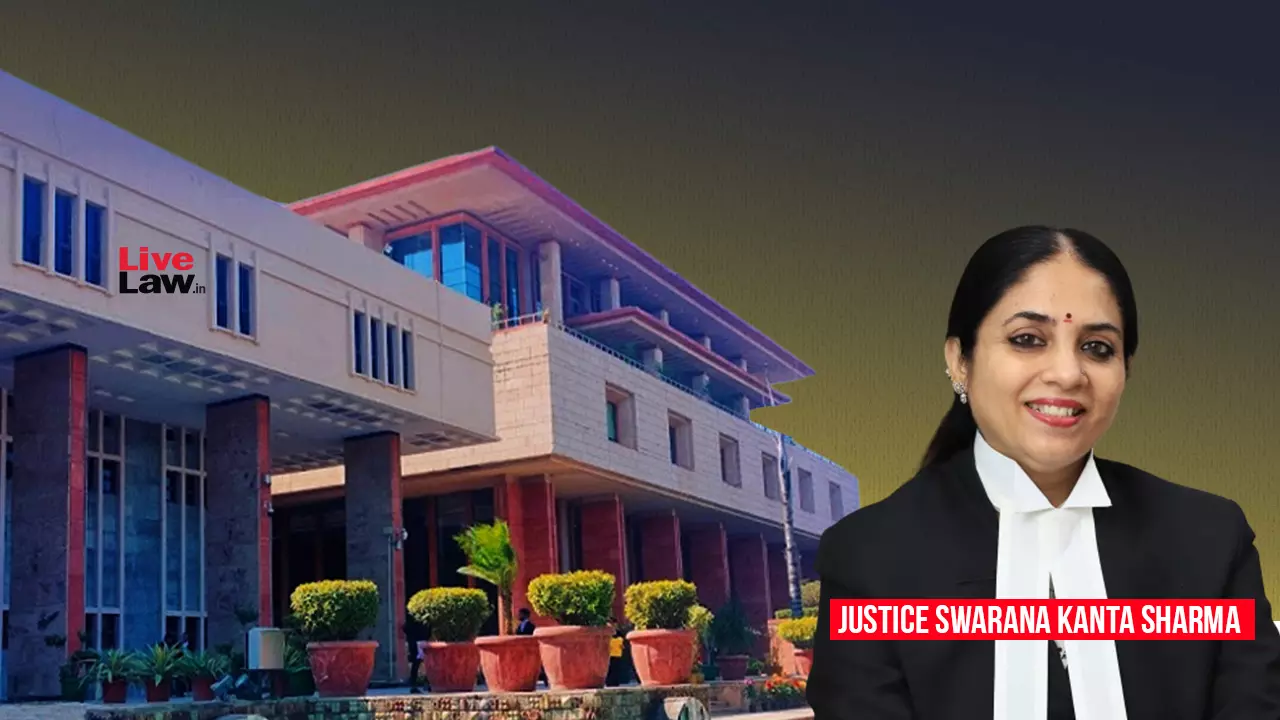- Home
- /
- High Courts
- /
- Delhi High Court
- /
- Policing Not Meant To Serve...
Policing Not Meant To Serve Interests Of Any Specific Religious Community: High Court On 'Pardanashin' Muslim Woman's Plea Against Delhi Police
Nupur Thapliyal
1 March 2024 1:48 PM
The Delhi High Court has observed that policing is not tailored to serve the interests of any specific religious or any cultural community alone and has to be guided by the principles of impartiality, fairness, and reasonability.“While respecting cultural sensitivities and religious practices, law enforcement agencies must prioritise the common good and uphold the law without...
The Delhi High Court has observed that policing is not tailored to serve the interests of any specific religious or any cultural community alone and has to be guided by the principles of impartiality, fairness, and reasonability.
“While respecting cultural sensitivities and religious practices, law enforcement agencies must prioritise the common good and uphold the law without discrimination,” Justice Swarana Kanta Sharma observed.
Justice Sharma was dealing with a plea moved by a purdahnashin Muslim woman alleging that she was forcibly taken by the cops from her residence without her veil and was illegal detained in the police station.
She also sought sensitization of the Delhi Police regarding the sacrosanct religious, social customs and practices of all women who observe Purdah, either as a religious belief or as a part of their personal choice, belonging to any religion, which are guaranteed under Article 21 of the Constitution of India.
The court held that in police investigations, there cannot be any room for anonymity, as identification is essential for ensuring justice and maintaining security.
It added that allowing anonymity under the guise of religious practice or personal choice could open the door to abuse and hinder the investigation process.
“Therefore, it is important that law enforcement agencies have the authority to identify individuals when necessary, in order to maintain public order, regardless of veiling practices and also regardless of the fact that whether these practices would be covered under Article 25 the Constitution or not. This would ensure transparency, accountability, and fair treatment of all individuals involved in the investigative process,” the court said.
The woman claimed that on the intervening night of November 05-06, some police officials of Chandni Mahal police station came to her residence at around 03:00 AM, conducted search, took her without her veil and illegally detained her at the police station where she was allegedly subjected to inhuman and degrading treatment, including physical assault.
Disposing of her plea, the court said that is no gainsaying that covering of head by women cannot be equated with covering the face by putting a veil or pardah and such women cannot be termed as pardanashin.
On the practice of wearing hijab or burqa in Islam, the court said that whether such practises fall under the essential religious practice, so as to be covered within the ambit of Article 25 of Constitution of India, is an issue which is pending before the Supreme Court, and there is nothing at this stage to prove that wearing a pardah, or burqa as called in Islam, would be an essential religious practice.
“Therefore, in this Court's view, the word Pardanashin by its mere mention conjures an image which is not confined to a word or a single picture itself but the entire journey of women in India which they have covered from being empowered, being free of burden of a veil, to the indescribable burden of a weightless piece of cloth called veil which was full of challenges, troubles and social struggles,” the court said.
It added that in Hindus, there is no mandatory provision to wear veil or ghoonghat, or Hindu women being pardanashin by virtue of their religion and the same is the scenario in case of Sikh women. The court said that in India, however, everyone can make their individual choices.
“As far as the reference of the learned counsel for the petitioner to Mata Sita (म ा त ा स ी त ा ), in context of Ramayana ( र ा म ा य ण ), is concerned, this Court observes that neither in the Ramayana nor in any of the ancient or modern temples of Hindus, Mata Sita has been projected or shown to be wearing a veil or a ghoonghat or pardah,” the court said.
Perusing the extracts from Ramcharitmanas, the court said that Mata Sita did not wear a veil and therefore, even to refer to her as a pardanashin woman will amount to nothing but distortion of description of Mata Sita in the religious texts.
Observing that there is a difference between religion and dharma as understood in Hinduism, the court said that while practising a lifestyle, a profession and different individual relationships etc., each person is practising his dharma qua that relationship or profession or act.
“Thus, a different dharma is followed by each individual in his different roles whether professional or personal as understood in Hinduism. The word religion is different, thus, from dharma as understood in Hinduism,” the court said.
“Thus, this Court expresses deep appreciation for the learned counsel who appeared on behalf of petitioner Sh. M. Sufian Siddiqui, for bringing this case before this Court, as well as the learned Amicus Curiae Smt. Manisha Agrawal Narain, who through her well-researched and elaborate report, shed light on various issues relevant in the present case,” it added.
Title: RESHMA v. THE COMMISSIONER OF POLICE
Citation: 2024 LiveLaw (Del) 242

